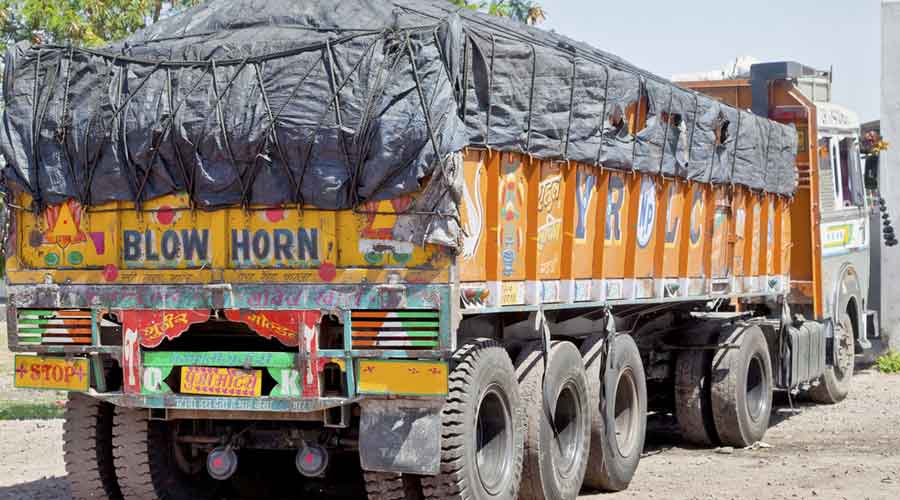Heavy goods vehicles are notorious emitters of the highly toxic PM2.5 and restricting their entry into Kolkata could help reduce the city’s air pollution, several air quality experts said on Wednesday.
Besides PM2.5, the emission from diesel-powered goods vehicles include toxic oxides of nitrogen that can combine with other gases present in the air to form ozone. Inhaling these toxic elements can have both short and long-term health impacts, said doctors.
A study published in 2019 showed that the transport sector contributed more than 20 per cent of PM2.5 present in the air of Kolkata. More than half of that was emitted by goods vehicles.
The National Environmental Engineering Research Institute (NEERI) had done the study for the state pollution control board.
PM2.5 are particulates that are 2.5 micron or less in size. They are so tiny that they can enter the dee-pest crevices of the lungs and trigger a number of serious diseases.
“PM2.5 can impact any human organ. It can go into terminals of the lungs and then get mixed with the blood. Once that happens, PM2.5 can reach any organ. Long-term exposure to PM2.5 can cause lung cancer and chronic obstructive pulmonary disorder,” said Arup Halder, a pulmonologist at Woodlands Hospital.
Halder said both nitrogen dioxide and ozone were oxidant gases and could cause inflammations.
“NO2 is said to be the cause of asthma in genetically predisposed people. Ozone can break the defence mechanism of the lungs, as a result of which unwanted substances can enter the lungs,” Halder said.
“Restricting the entry of heavy goods vehicles can help improve the air quality of Kolkata. A study by NEERI, published in 2019, found that heavy goods vehicles accounted for 49.5 per cent of the transport sector's contribution towards emission of PM2.5,” said Dipanjali Majumder, a senior scientist with NEERI.
Mayor Firhad Hakim met traders, transporters' bodies and labour unions from the Posta, Mechhua and Burrabazar markets on Monday and spoke about possible locations on the fringes of Kolkata where they could be shifted.
The trading hubs bring around 650 heavy trucks to the city every day.
Hakim told The Telegraph on Tuesday that if Kolkata’s air quality has to improve, the entry of large trucks into the city has to be reduced.
“Offices can remain in the city proper but the godowns and trading have to be held at a location outside the city. We can’t think of (Kolkata as) London with all these markets like phal patty (fruit trading hub Mechhua) remaining in the heart of the city.”
Heavy vehicles, fitted with mammoth engines powered by diesel, are known for emitting high volumes of PM2.5.
“It is well known by now that heavy vehicles are high emitters of PM2.5. They also emit oxides of nitrogen. The oxides of nitrogen mix with other gaseous compounds and form ozone. The gases remain hanging near the ground level,” said Anumita Roy Chowdhury, executive director of the Delhi-based Centre for Science and Environment (CSE).
She said people living along the route of a polluting vehicle and those within 500 metres of the vehicle are at the highest risk from the pollutants emitted by it. In a congested city like Kolkata, many people are exposed to emissions.







